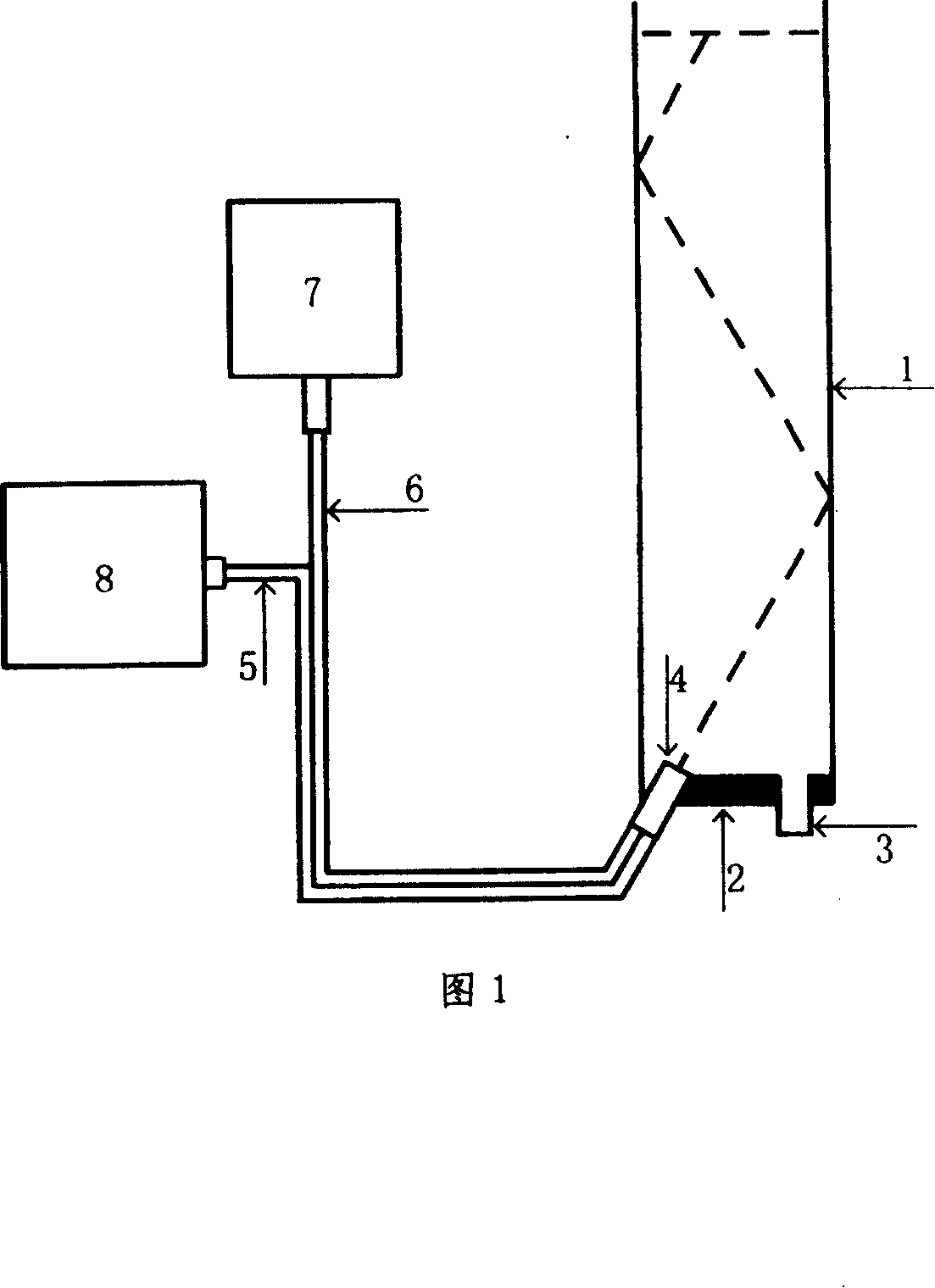Rear light scattering signal inductive probes
A scattering signal and sensing probe technology, applied in the field of light scattering signal detection, can solve problems such as unfavorable sensor miniaturization, limited detection sensitivity, and unfavorable online measurement, and achieve the effects of simple structure, expansion of research scope, and convenience of online detection.
- Summary
- Abstract
- Description
- Claims
- Application Information
AI Technical Summary
Problems solved by technology
Method used
Image
Examples
Embodiment Construction
[0016] See Figure 1, this probe consists of the following parts:
[0017] A cylindrical or square cylinder with a smooth inner surface1. It is glued to base 2. Its main function is to serve as a container for the liquid to be tested. The outer layer is painted black to block light.
[0018] The light source and signal transmission part are composed of two groups of optical fibers, one group is excitation light optical fiber 6, which is composed of 1 to 3 optical fibers. The other group is the detection signal transmission optical fiber 5, which is composed of 4 to 7 optical fibers. Two groups of optical fibers are combined to form a 180-degree backlight scattering detection system.
[0019] Base 2. Made of hard material, opaque to light. Two small holes are designed on the base, one is an optical fiber jack 4 for inserting an optical fiber, and the other is a leakage hole 3 for draining and releasing a measurement liquid.
[0020] The fiber group is inserted from the pr...
PUM
 Login to View More
Login to View More Abstract
Description
Claims
Application Information
 Login to View More
Login to View More - R&D
- Intellectual Property
- Life Sciences
- Materials
- Tech Scout
- Unparalleled Data Quality
- Higher Quality Content
- 60% Fewer Hallucinations
Browse by: Latest US Patents, China's latest patents, Technical Efficacy Thesaurus, Application Domain, Technology Topic, Popular Technical Reports.
© 2025 PatSnap. All rights reserved.Legal|Privacy policy|Modern Slavery Act Transparency Statement|Sitemap|About US| Contact US: help@patsnap.com

